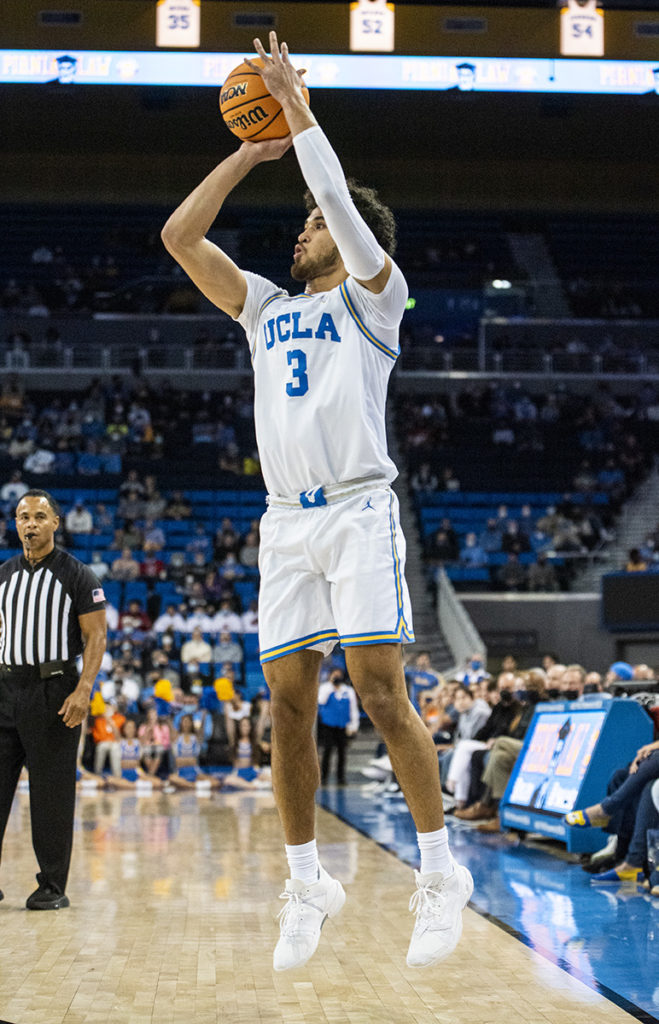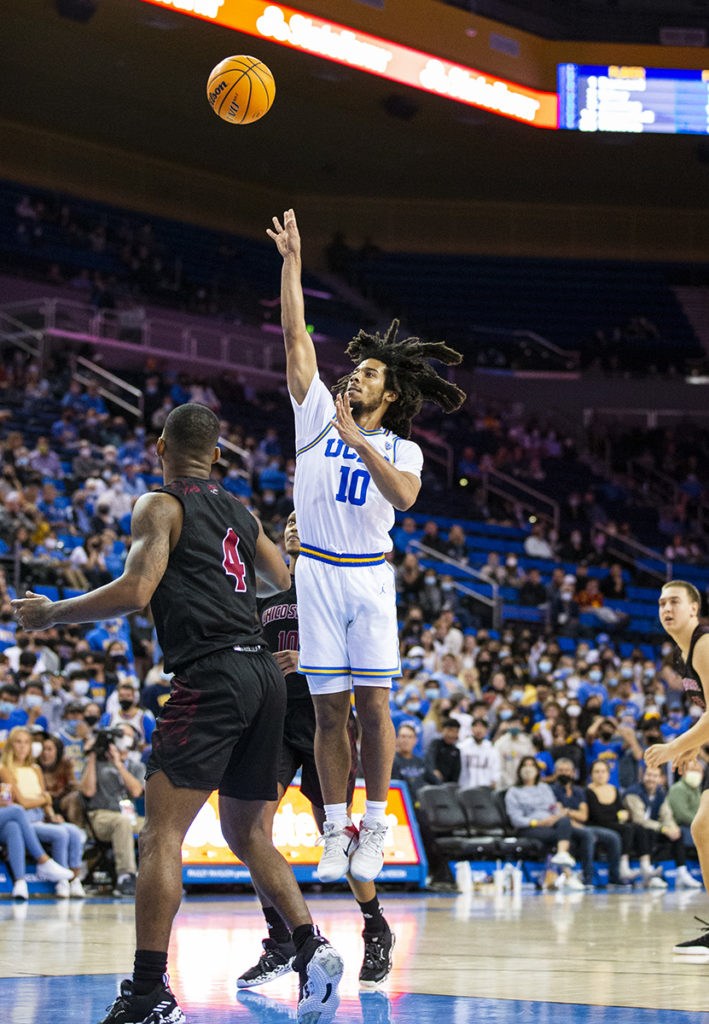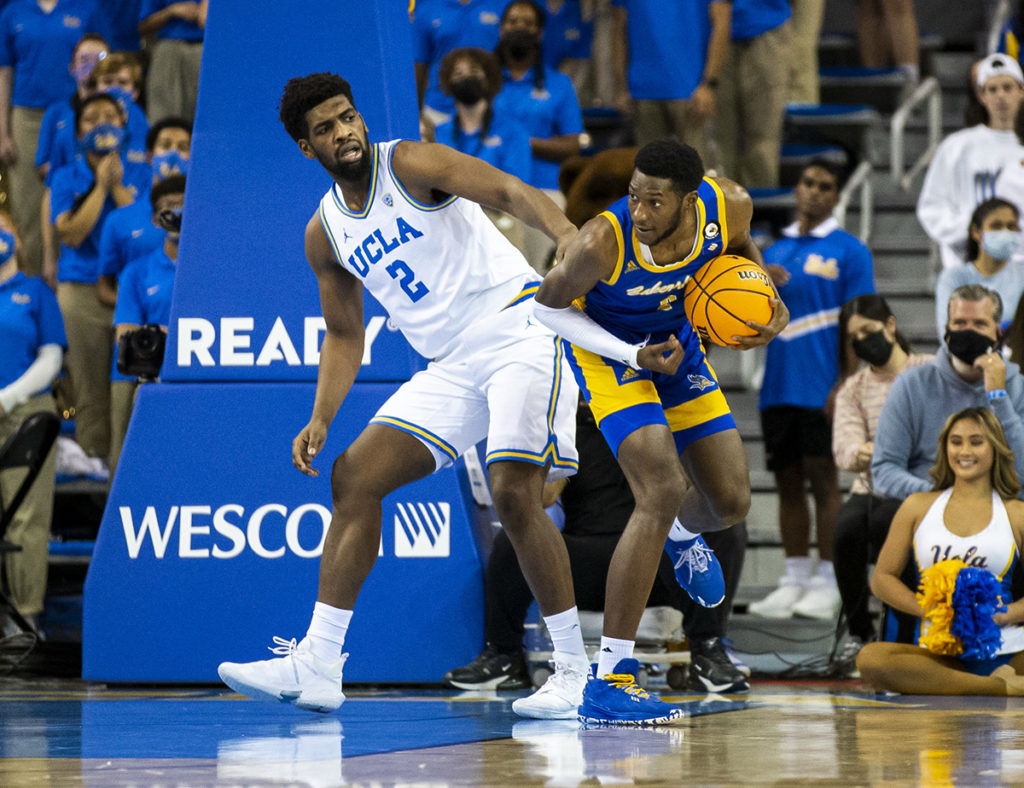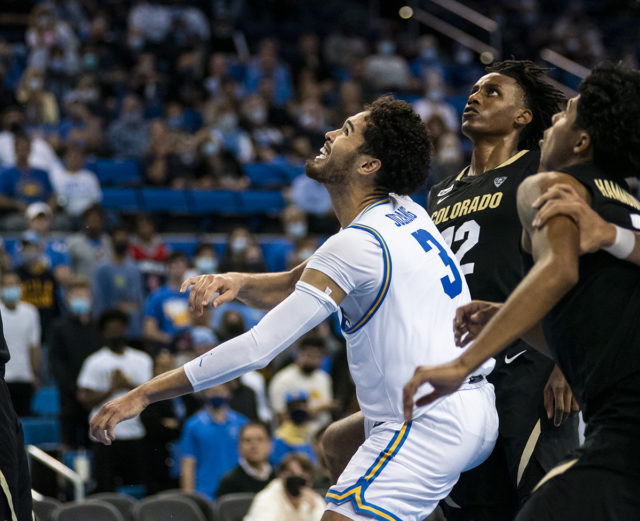No. 7 UCLA men’s basketball (13-2, 5-1 Pac-12) has yet to lose a true road game this season, sweeping Utah (8-12, 1-9) and Colorado (12-6, 4-4) in the mountains over the weekend. Despite the discrepancies in the standings between the Bruins and their opponents, each game was a back-and-forth affair, with the blue and gold winning by an average margin of 5.5 points across the pair of contests. Here are the three main talking points from UCLA’s two tight road wins.
Johnny Juzang is that dude

After a lull in the scoring department for Johnny Juzang – scoring under 19 points in eight straight games entering last week – the junior guard is starting to find his stroke, and it could not have come at a better time.
The rest of the offense capital-S Struggled over the weekend, with everyone but Juzang shooting at a 33.8% clip from the field while converting on only 29% of their attempts from beyond the arc. Senior guard Jules Bernard, junior guard/forward Jaime Jaquez Jr. and redshirt junior guard Tyger Campbell – three of UCLA’s top four leading scorers – had particularly bad offensive performances.
But not Johnny.
His 28- and 23-point performances against Utah and Colorado, respectively, extended his stretch of consecutive 20-point games to four. Juzang was able to do it efficiently, with his 58% shooting mark the highest among any two-game Pac-12 series of his career.
Juzang’s 18 first-half points against Utah were the only thing keeping UCLA afloat against the Pac-12’s last-place team. While he slowed down in the second half, his 6 points in the final 10 minutes were critical too.
Against the Buffaloes, Juzang scored a team-high 9 points in a 22-8 first-half run that gave the Bruins a 15-point halftime lead, but it was his late-game heroics that saved the team.
With 3:24 left to go and his team clinging to a 3-point lead, Juzang broke his man down off the dribble and drilled a jumper to put the Bruins up five. On his very next possession, Juzang went back to the well one more time, again giving UCLA a 5-point lead.
During the Buffaloes’ second-half surge, the Bruins looked lost. But Juzang became a rudder for the rudderless, guiding UCLA to an important sweep of the mountain schools and putting his name back into the Pac-12 Player of the Year conversation.
With No. 3 Arizona coming to town Tuesday, the Bruins better hope Juzang’s best stretch of the season continues.
Back down to earth

While Juzang is trending up, one of his teammates is doing the opposite.
Entering the week, Tyger Campbell was shooting 47% from beyond the arc.
It was a surprising development, considering Campbell converted on just about a quarter of his 3-point tries in his first two seasons. Campbell deserved a lot of credit for that improvement, capitalizing on both his work in the offseason and encouragement from teammates and coaches.
However, very rarely can one double their shooting percentage like that and sustain it for the whole season. Once he continued to take advantage of the cushions defenders provided him based on his career shooting splits, it was only a matter of time before defenses caught up to him and respected him 20-plus feet from the basket.
And time certainly caught up with Campbell over the weekend.
The guard shot an abysmal 16.7% from the field across games against Utah and Colorado, with a 1-of-7 mark from beyond the arc to boot.
Instead of the wide-open, catch-and-shoot attempts he was accustomed to seeing early in the season, Campbell was run off the line and forced into taking contested off-the-dribble attempts from deep by the Utes and Buffaloes.
He came up clutch when it mattered most, but UCLA wouldn’t have needed it – or the team’s clutch minutes against Utah – had he put forth better showings offensively throughout the games.
This weekend could mark the long-awaited switch in how teams defend Campbell.
Now, it’s the guard’s turn to adjust.
Cody Riley: fouling machine

In six games since returning from a sprained MCL on Jan. 6, Cody Riley has picked up 20 fouls.
This puts him at 3.3 fouls per game, a mark that would place him behind Arizona State’s Alonzo Gaffney for the top mark in the conference.
To dive deeper into it, Riley, on average, fouls about every six minutes. With the limit being five fouls, this means Riley can barely eclipse the 30-minute mark before he should theoretically foul out at his current pace.
That’s not bad in a vacuum, but considering coach Mick Cronin’s short leash, he’s played much less than that in actuality. Riley has averaged 21 minutes per game since returning from injury – a criminally low number for someone as valuable as him.
Some of those low numbers could be attributed to a ramp-up in conditioning after the injuries, but the majority of his substitutions come after fouls.
And while his foul rate is not too far off from his career one with the Bruins, it’s the timing of these fouls that is so crucial.
In the games against Utah and Colorado, Riley was forced to substitute out after picking up a foul within the first five minutes of the game, with redshirt senior center Myles Johnson replacing Riley after just 24 seconds against Colorado. Riley still looks a step slow after his injury, and he’s using his arms too much to stay in front of the offense or when trying to rebound the ball.
That was a continuation of his performance last weekend, in which he fouled eight times – including twice within the first 30 seconds of the game against Oregon – resulting in one disqualification.
Cronin’s tendency to pull Riley after a single foul puts UCLA in a tough spot. The Bruins don’t exactly have the best post depth, and playing nearly the majority of the minutes against Utah and Colorado without Riley certainly contributed to the tight contests.
Should the Bruins want to play at their peak, they’ll need Riley for the 26.8 minutes per game he played in the NCAA tournament last year and not the 21 he’s at this year.
Cutting down his fouls, even just a tad, is one path forward.

